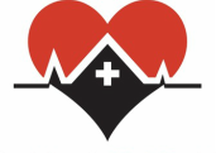When Do You Use An Abdominal Thrust?When someone is choking, it is important to immediately help them dislodge the object in the airway. The longer that the object stays lodged in the airway, the more precarious the situation becomes. A lifesaving measure used in these situations is the abdominal thrust which can be used to dislodge the object restore normal breathing. So what exactly is an abdominal thrust? Abdominal thrusts are a life-saving technique that both bystanders and first responders can use to treat choking victims. An abdominal thrust allows a rescuer to administer a quick but strong thrust to a choking victim’s abdomen to help force the object out of the airway. What is An Abdominal thrust?Abdominal thrusts, also known as the Heimlich maneuver, are a first-aid technique used to treat conscious choking victims in which the rescuer administers thrusts to a patient’s upper abdominal region. This skill is commonly taught during basic life support (BLS) and advanced cardiac life support (ACLS) classes, but it never receives as much attention as chest compressions and rescue breaths do. The abdominal thrust maneuver can be performed in both children and adults via different techniques. The thrusting motion pushes air from the lungs in an upward motions through the throat to dislodge foreign objects and treat upper airway obstructions. Abdominal thrusts are relatively simple to perform and don’t require any equipment or extensive training. Once you learn the proper technique and abdominal thrust hand placement, anyone can perform them. They’re a quick and accessible way to help a choking victim. Although there are no absolute contraindications, the abdominal thrust maneuver is not recommended by the AHA for infants or unconscious patients. Also, pregnant subjects should receive management with sternal compressions, as opposed to abdominal. How To Perform Abdominal thrustsSo how do you perform an abdominal thrust? To give an abdominal thrust, you should follow the steps below:
ABDOMINAL Thrust FAQ'sWhen should you not use the abdominal thrust? The abdominal thrust maneuver should not be performed on unconscious patients (who should receive chest compressions) or infants (who should receive backslaps). Does an abdominal thrust hurt? Abdominal thrusts can be painful, but that doesn’t mean you should hesitate to deliver them if a patient is choking. The most commonly reported complications are rib fractures and gastric or esophageal perforations. Was the Heimlich maneuver replaced with the abdominal thrust? Yes. The Heimlich maneuver was replaced by abdominal thrusts in the 2006 guidelines by the American Red Cross and the American Heart Association. How can a rescuer tell the difference between mild airway obstruction and severe airway obstruction? The rescuer should ask, “Are you choking?” If the victim nods yes, assistance is needed. Choking also often is indicated by the Universal Distress Signal (hands clutching the throat). Learn CPR With Help-A-Heart CPRWould you like to learn more about abdominal thrusts and other topics related to CPR and First Aid? Take a moment to view our training class schedule where you can also register directly for a CPR or First Aid course with Help-A-Heart CPR!
To find out more, contact us today through our online contact form or give us a call at (210) 380-5344.
Comments
|
AuthorDr. Tracy A. Jones is the CEO of Help-A-Heart CPR, LLC and an American Heart Association, ASHI, and American Red Cross Master Program Trainer, Instructor, & AHA Faculty Member located in San Antonio, Texas. Archives
July 2024
Categories |
Help-A-Heart CPR, LLC | 1747 Citadell Plaza Suite 101 | San Antonio, Texas 78209 | (210) 380-5344 | [email protected]
Copyright © Help-A-Heart CPR, LLC 2024
100% Certification Acceptance
We promise your employer, school, or agency will accept the certification card we issue to you. If there is a question of acceptance or validity, simply send us an email at [email protected] with full details. We will reach out to the individual/entity and provide accreditation information. If still there’s a question, we will provide you with a full refund of your class fee. It’s that simple.
We promise your employer, school, or agency will accept the certification card we issue to you. If there is a question of acceptance or validity, simply send us an email at [email protected] with full details. We will reach out to the individual/entity and provide accreditation information. If still there’s a question, we will provide you with a full refund of your class fee. It’s that simple.
|
Communities Served
ALABAMA: Birmingham
ARKANSAS: Fayetteville, Hot Springs, Jonesboro, Little Rock NEW MEXICO: Albuquerque TENNESSEE: Knoxville TEXAS: Amarillo, Arlington, Austin, Bandera, Bastrop, Boerne, Brownsville, Comfort, Converse, Corpus Christi, Dallas/Ft. Worth, Del Rio, Dripping Springs, El Paso, Floresville, Fredericksburg, Georgetown, Harlingen, Houston, Junction, Katy, Kerrville, Kingsville, Kingwood, Laredo, Lubbock, Lufkin, McAllen, Midland, New Braunfels, Odessa, Pleasanton, Round Rock, San Angelo, San Marcos, Schertz, Seguin, Taylor, Temple, Texarkana, Tyler, Universal City, Victoria, Waco, The Woodlands |
Why Choose Help-A-Heart CPR?
1. Flexible Scheduling
2. On and Off Location Training Available 3. Casual, Fun Atmosphere 4. Best Price Guarantee 5. All Instructors are AHA and/or ARC certified 6. 5 Star Google Reviews 7. Blended Learning (Online & Skills Check) Available 8. Meets OSHA & College CPR Requirements 9. Get Certified Within 3-4 Hours 10.Certification Is Good For Two Years 11. Official AHA/ARC/ASHI Training Site 12. High Quality Safety Training! |








